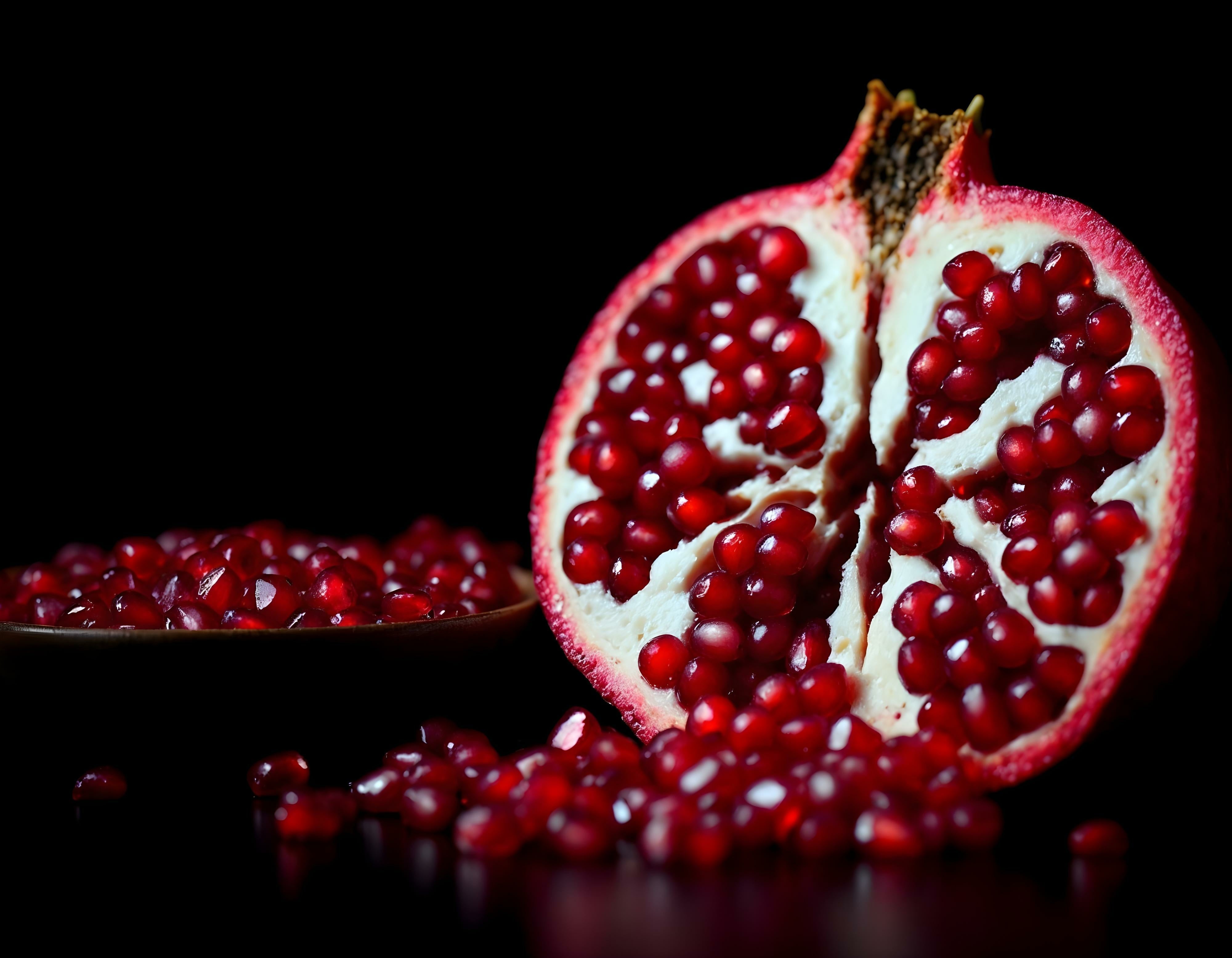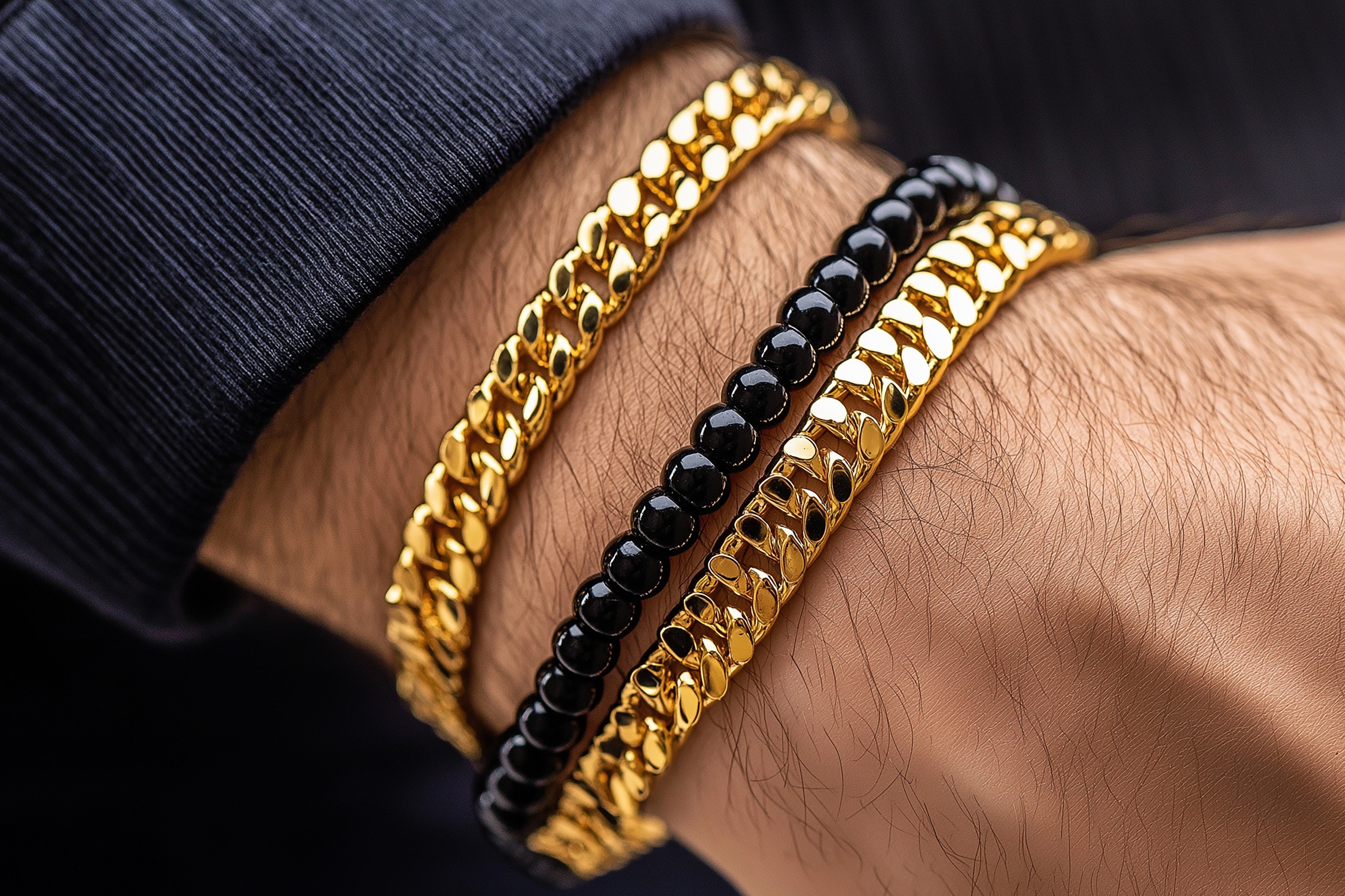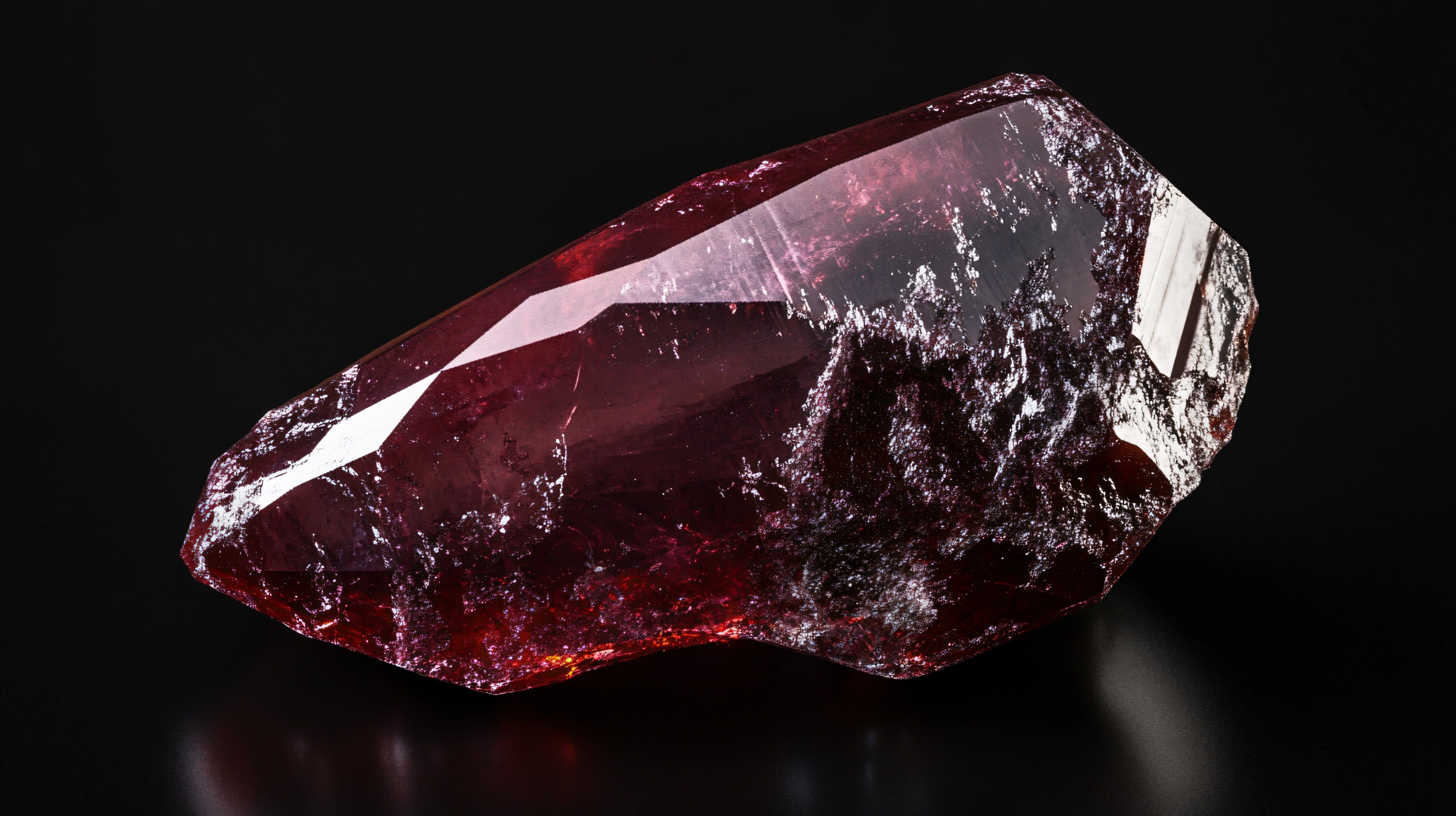Scientific Classification
Garnet
• Mineral Class: Sulfate
• Crystal System: Orthorhombic
• Chemical Composition: SrSO₄ (Strontium Sulfate)
• Hardness (Mohs Scale): 3–3.5
• Luster: Vitreous to pearly
• Transparency: Transparent to translucent
• Specific Gravity: ~3.9–4.0
• Primary Origin(s): Madagascar, Tunisia, Egypt, Libya, Peru, Poland, United States (notably Ohio and California)

Granatum and the Pomegranate
The Latin root of garnet
Garnet” comes from granatum—Latin for pomegranate. The resemblance is sacred. Crack one open, and you’ll see: its seeds glow like the facets of ancient fire. Long a symbol of divine favor and hidden knowledge, the pomegranate adorned Solomon’s Temple and crowned the courts of kings. To wear garnet is to carry that legacy—abundance, wisdom, and sacred mystery, sealed in crimson.
The Power of Garnet
GARNET: A STONE OF WEALTH, LIGHT, AND POWER
Garnet is not an ordinary gemstone. For centuries, it has been a symbol of prosperity, divine illumination, and refined living. Worn by nobility, merchants, and scholars, it represents self-mastery, inner fire, and the enjoyment of life’s greatest luxuries.
METAPHYSICAL PROPERTIES OF GARNET
- Chakra: Root (stability, security, self-worth)
- Element: Fire (energy, transformation, personal power)
- Metaphysical properties: Emotional healing, regeneration, courage
GARNET: THE STONE OF CHRIST’S SACRIFICE AND DIVINE LIGHT
For centuries, garnet has been regarded as a stone of redemption, divine illumination, and covenant. In Christian tradition, its deep crimson color has long been associated with the blood of Christ, the ultimate sacrifice that granted mankind eternal life.
- In medieval Christian lore, garnet symbolized Christ’s passion and the perseverance of the faithful. Many believed it was the stone that adorned His wounds, a reminder that suffering refines the soul.
- Some interpretations suggest garnet was among the twelve stones on the High Priest’s breastplate (Exodus 28), representing the tribe of Judah, the lineage of Christ.
- Early Christian texts describe the heavenly realms glowing with garnet-like fire, a reflection of divine presence and eternal truth.
This stone does not merely represent power—it signifies grace, sacrifice, and the unbreakable promise of redemption.
Beyond Christian texts, the Talmud (Sanhedrin 108b) also mentions a radiant stone—often interpreted as garnet—that illuminated Noah’s Ark during the great flood. A symbol of guidance in darkness, it echoes garnet’s deeper spiritual significance: a light that is never extinguished.
To wear garnet is to carry a mark of faith, resilience, and divine purpose. It is a reminder that true strength is not just in conquest, but in the ability to endure, to transform, and to rise anew.
THE LATIN ROOT OF GARNET: GRANATUM AND THE POMEGRANATE CONNECTION
The name garnet comes from the Latin granatum, meaning pomegranate. The resemblance is unmistakable—cut open a pomegranate, and its deep red seeds mirror the glowing facets of garnet.
This connection is ancient and profound:
- Pomegranates symbolize wealth and fertility – In Greek and Hebrew tradition, the fruit represents abundance, divine favor, and hidden knowledge.
- Solomon’s Temple featured pomegranate motifs – The columns of the First Temple in Jerusalem were adorned with carved pomegranates, a symbol of divine wisdom and prosperity.
- A fruit of kings and scholars – From Persia to Byzantium, pomegranates and garnets were reserved for those who understood their deeper meaning.
To wear garnet is to carry a piece of this legacy—an emblem of abundance, knowledge, and sacred mystery.
THE EUROPEAN LEGACY OF GARNET: BOHEMIAN MASTERPIECES
By the 1500s, garnet had become a hallmark of European luxury. Nowhere was this more evident than in Bohemia (modern-day Czech Republic), where artisans perfected the art of garnet cutting.
- Bohemian garnets were prized by Venetian traders, Habsburg royalty, and European elites.
- The deep red glow of garnet made it a favorite for royal jewelry, signet rings, and ceremonial adornments.
- Even today, authentic Bohemian garnet jewelry remains a mark of craftsmanship and refinement.
From Renaissance courts to modern collectors, garnet has remained a timeless emblem of wealth and status.
GARNET AND THE ART OF WORLDLY ENJOYMENT
Unlike stones associated with sacrifice, garnet is a stone of confidence, prosperity, and pleasure. It does not call for restraint—it calls for self-worth and abundance.
- Enhances personal magnetism and confidence
- Attracts wealth, success, and social influence
- Encourages refined living, beauty, and luxury
This is not a stone of self-denial. It is for those who understand that to enjoy life’s finest things is to honor the divine.
THE STONE OF THOSE WHO KNOW THEIR WORTH
Garnet does not beg for attention—it commands it. A stone of power, knowledge, and legacy, it is worn by those who understand that true wealth begins within.
Understanding the Power of Garnet
Frequently Asked Questions
GARNET
Garnet is believed to energize the spirit, cleanse the blood, and awaken inner fire. It is often associated with the Root Chakra, helping with grounding, stability, and spiritual authority.
Yes. Garnet is the traditional birthstone for January, associated with strength, regeneration, and new beginnings.
In medieval Christian lore, Garnet represented Christ’s Passion—its deep red hue recalling the blood shed on the Cross. Some traditions associate it with the stone that illuminated Noah’s Ark, symbolizing divine guidance and unextinguished light.
Never. All ÉLYON Garnet is 100% natural, untreated, and hand-selected for its deep natural fire and sacred resonance. We do not deal in synthetic or enhanced stones.
Yes. Garnet is durable (7–7.5 on the Mohs scale) and suitable for everyday wear. Its energy is best worn close to the skin, especially as rings, bracelets, or pendants.
Traditionally, Garnet has been used for emotional healing, enhancing self-worth, and increasing vitality. It is also regarded as a stone of protection—especially for travelers, leaders, and spiritual warriors.
ÉLYON Garnet transcends gender. It is chosen by those who live with purpose, walk in legacy, and honor both power and grace.
The Scrolling Stone

Elevate Your Vibe with Onyx: Strength and Sophistication
Few accessories can match the timeless allure and powerful energy of onyx. This bold, sleek stone has been cherished for centuries as a symbol of strength, self-mastery, and protection. For the...
Read more
How to Style Onyx Jewelry: A Complete Fashion Guide for 2025
The timeless allure of onyx jewelry transcends seasonal trends, making it a cornerstone of sophisticated style. Whether you're wearing an ÉLYON onyx bracelet or building a complete onyx jewelry col...
Read more
Onyx has been revered throughout history as a stone of strength and protection. In ÉLYON's distinctive designs, this ancient gemstone takes on new significance, combining its traditional properties...
Read more

